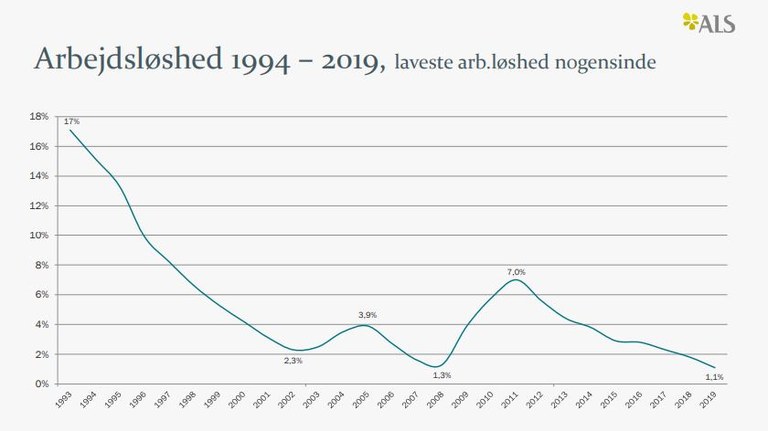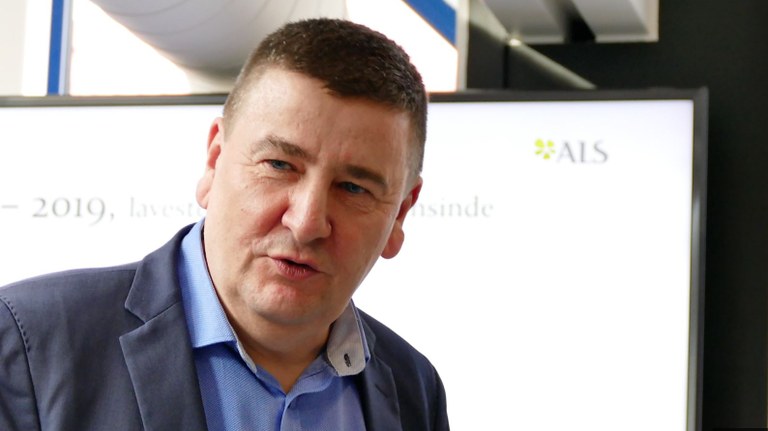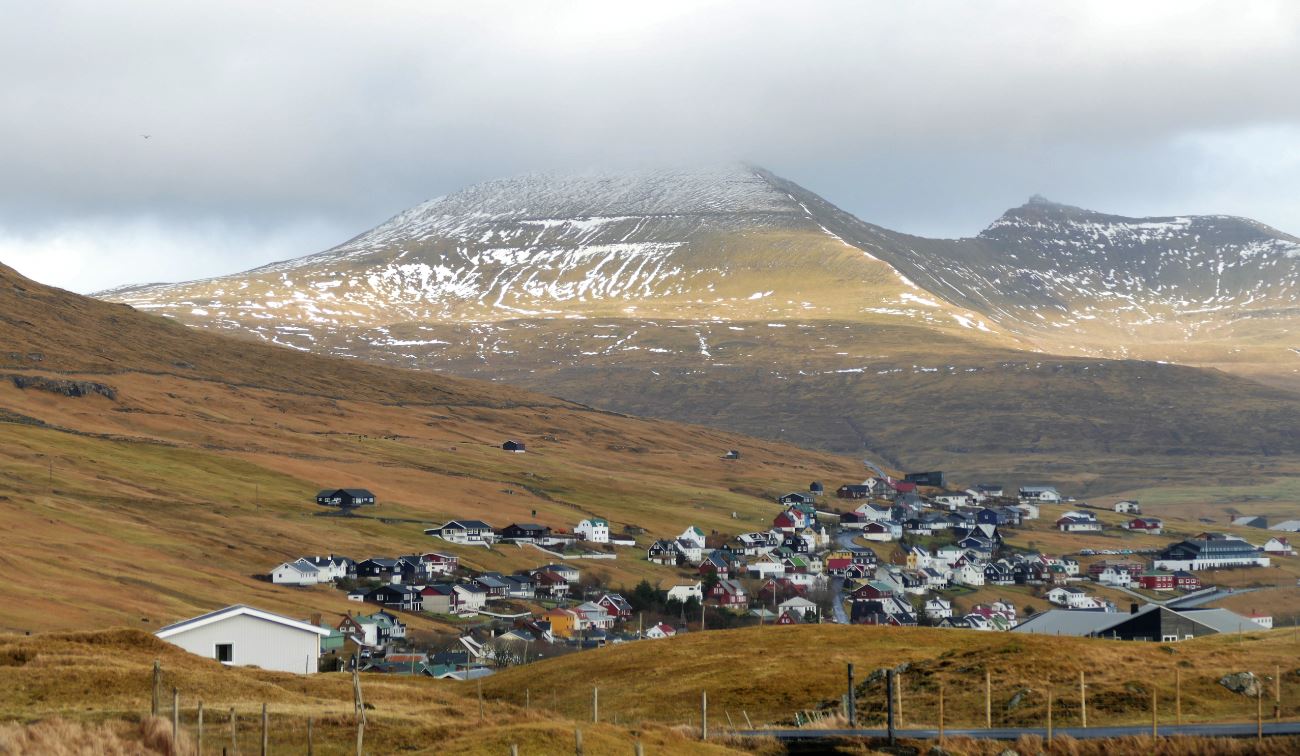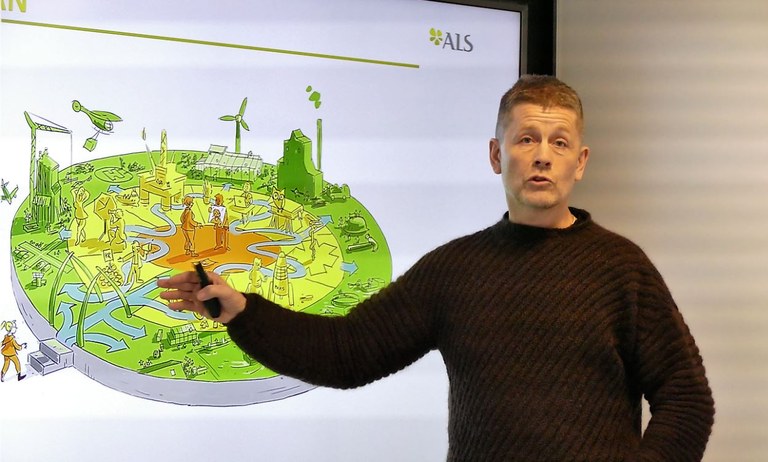Record low unemployment in the Faroe Islands – just 296 people
Nowhere in the Nordics will you find a higher employment rate than in the Faroe Islands right now. It stands at 90%, and unemployment is only 0.9%. What is it like in a society where nearly everyone has a job, and where being unemployed is correspondingly difficult?
Spirits are high at the Faroese Employment Service, ALS.
“We have only had one storm so far this year. It lasted from January to February,” jokes CEO Magni á Deild Olsen.
The weather might be changeable – the day before, Torshavn was bathed in sunshine, overnight a hailstorm battered against the hotel window and now there is calm – but the economic high pressure has been steady for eight years. In 2011 unemployment stood at 7%. Since then, it has fallen year on year.
 The graph shows unemployment figures from 1994 to 2019. Since it was published, unemployment has fallen further. By the end of November last year, 296 people were registered as unemployed, which represents 251 full-time positions. This meant unemployment fell to 0.9%. Source: ALS.
The graph shows unemployment figures from 1994 to 2019. Since it was published, unemployment has fallen further. By the end of November last year, 296 people were registered as unemployed, which represents 251 full-time positions. This meant unemployment fell to 0.9%. Source: ALS.
Magni á Deild Olsen explains that unemployment insurance was only introduced in 1992. Before that, unemployed people were given social aid. But in 1990, the Faroe Islands were hit by a severe crisis. Unemployment rose to 20%. Over a five year period, 7,000 people – 15% of the entire population – moved away from the islands. Had this happened in Denmark, it would have meant the exodus of one million people.
The crisis highlighted the need to have a buffer during challenging times. That is why trade unions and employers decided to establish ALS, or Arbeiðsloysisskipanin in Faroese.
 Magni á Deild Olsen, the ALS CEO.
Magni á Deild Olsen, the ALS CEO.
“Employees at first contributed 2.5% of their salaries [to the unemployment fund]. All workers are members. It is like a tax, but we are not part of the budget agreed in parliament,” says Magni á Deild Olsen.
After a few years, the fee was lowered, and it was recently decided to lower it further to 1%. The support received by the unemployed will also increase. The fund has grown rapidly. In the past five years, as the number of employed people has risen to around 28,000, the fund has tripled in size to one billion Danish kroner (€134m).
Some worry the fund will grow so large that politicians will interfere, even though labour market issues is not a hot political potato. Parliament is busy debating more serious issues – like fish. One major issue is where the capelin has disappeared to. This is the little fish which is so important as food for cod and other bigger fish, as well as for many sea birds. In 2019 no capelin quotas were set at all in the entire North Atlantic fisheries areas. 2020 looks set to be another difficult year for the capelin.
This means there might be more money going out of the unemployment fund in future. But right now there is a desperate need for labour, especially in the construction industry. Two new hotels are being built in Torshavn and a third is being expanded. This will double the hotel capacity and create 120 new jobs. Two tunnels are also under construction to help link the Faroes into one labour market.
 Distances are shorter after several new tunnels have been constructed in the Faroe Islands, but moving from one island to another can still be a big mental step.
Distances are shorter after several new tunnels have been constructed in the Faroe Islands, but moving from one island to another can still be a big mental step.
“As long as unemployment stays below 2.5%, employers are free to import labour from the EU and EEA. ALS must process any applications for workers from third countries,” says Magni á Deild Olsen.
Around 1,000 people from countries outside of the Nordics work in the Faroes today. 800 come from the EU, while 200 come from other countries.
The archipelago is divided into seven work areas. A job seeker is legally obliged to accept a job anywhere in the archipelago, but this is not really enforced.
“It can sometimes be difficult to get the only unemployed person to move to the other side of the archipelago. It can be easier to get a Thai worker to go there,” says the ALS CEO.
But there are other practical obstacles too. The cost of housing in Torshavn is far higher than in smaller places.
With unemployment being so low, ALS has completely changed its tactic.
“We put all our efforts into individual contact with the unemployed and discuss what is the best solution in each individual case. For many, there is only one alternative. ‘I want to work in that factory,’ they’ll say and point to the town’s fish processing plant,” explains head of department Høgni í Stórustovu.
The preparatory texts for the ALS legislation also state that ALS should use the individual’s skills as a starting point, and then go on from there.
Other types of measures are often needed to help those who do not find a job despite the extremely high employment rate. It is necessary to widen the horizon for what types of work unemployed people would consider.
 Head of department Høgni í Stórustovu with an illustration of the opportunities the labour market presents if you have enough imagination.
Head of department Høgni í Stórustovu with an illustration of the opportunities the labour market presents if you have enough imagination.
“We have stepped away from the bureaucratic administrator role, and have started using completely different people like therapists, psychologists and coaches. We are trying to communicate with people using trust, openness, kindness and positive expectations.
Using work-training programmes like Fjølsmiðjuna, where unemployed people can work together on projects that are beneficial to society, is one way of giving people new skills.
“For a while, ALS was the biggest potato grower in the Faroes, but we have finished doing that now,” says Høgni i Stórustovu.
In the little town of Elduvík on the north of Esturoy, there is an alternative setup. Groups of 12 are sent there to fish, go mountain climbing, do yoga and improve their self-worth.
“We have seen many good results from that,” says Høgni i Stórustovu.
- The MEST shipyard
-
lies in the middle of Torshavn, and anyone can see how they work. The company has links back to 1898, and comprises two shipyards and one mechanical workshop. It is one of the Faroes’ largest employers with 300 staff. When Denmark’s Prime Minister Mette Fredriksen visited the Faroe Islands between 6 and 8 November last year, she was given a tour of MEST – which is short for Machine, Electricity, Steel and Timber.
 Follow us on Facebook
Follow us on Facebook
